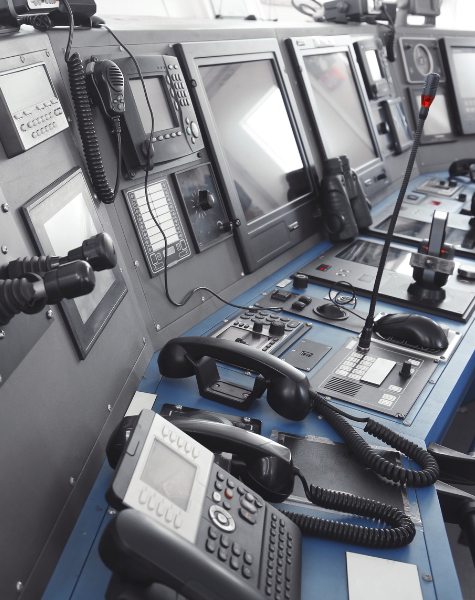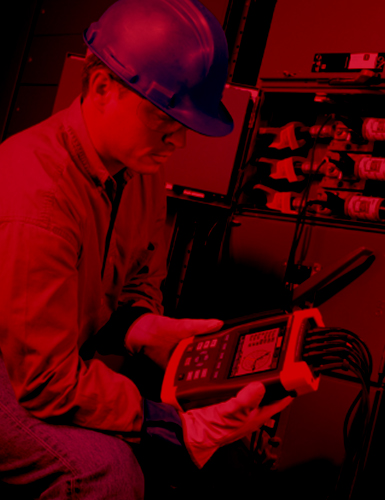Electrical
In the demanding environments of the marine and oil & gas industries, electrical & instrumentation (E&I) systems are critical for controlling processes, monitoring equipment, and ensuring safety. Our comprehensive range of E&I solutions is designed to meet the highest industry standards and empower you to achieve operational excellence.
- Circuit Breakers & Relays
- Air Circuit Breakers, MCCB, MCB, Over Current, Reverse Power, Short Circuit, Under Voltage
- Electrical Drives
- Variable Frequency Drives, DOL Starter, Star/Delta Starter, Soft Starters
- Gen. Set Controllers
- Gov. Controller, AVR, Synchronizing Unit, Load Sharing Unit
- Electrical Accessories
- Panel Meters, Panel Indicators, Push Buttons, Selector Switches
Gas Detection Systems
Gas detection is a vital component of safety protocols in environments where the presence of dangerous gases is a potential risk. Gas detectors are specifically designed to monitor and detect the existence of specific gases, such as carbon monoxide, methane, or hydrogen sulfide. By utilizing sensors capable of measuring gas concentrations, these detectors provide timely alerts to mitigate potential hazards, safeguard individuals, and enable prompt response actions.
- Fixed Gas Detection Systems:
Permanent installations for continuous monitoring of confined spaces, processing areas, and critical infrastructure. - Portable Gas Detectors:
Lightweight and portable devices for on-the-go monitoring in field operations and confined spaces - Wireless Gas Detection Systems:
Flexible solutions for remote and hard-to-reach locations, enabling realtime monitoring without the need for wiring. - Gas Analyzers:
Gas analyzers designed to provide detailed analysis of gas composition and concentration levels. These analyzers offer advanced features such as real-time data logging, trend analysis, and remote monitoring capabilities, allowing for precise measurement and control of gas levels in critical environments. - Alcohol Detectors:
Alcohol breathing monitors are essential for ensuring safety in environments where alcohol consumption may pose a risk to operational integrity. Our monitors utilize advanced breath analysis technology to detect the presence of alcohol in exhaled breath. - Span Gas Cylinders and Regulators:
To ensure the accuracy and reliability of gas detection devices, regular calibration is essential. Our range of span gas cylinders and regulators are specifically designed for calibrating gas detection devices, providing precise calibration gases at known concentrations to verify and adjust device accuracy as needed.
Fire Detection Systems
Fire detection is an essential element within fire safety systems, responsible for promptly identifying and warning about potential fires. Different types of detectors, such as smoke detectors, heat detectors, and flame detectors, are utilized to detect the presence of fire or smoke.
- Fire Alarm Control Panels:
- Conventional
- Addressable
- Smoke Detectors:
Advanced smoke detection technology for early detection of smoldering fires and smoke buildup. - Heat Detectors:
Thermal sensors designed to detect rapid temperature increases indicative of fire. - Flame Detectors:
Optical sensors capable of detecting the presence of flames, even in challenging environments with high background radiation or sunlight. - Manual Call Points:
Easily accessible call points for initiating manual fire alarms. Designed for intuitive operation, call points enable swift notification of emergency situations, allowing for rapid response and evacuation procedures. - Fire Bells:
Audible alarm devices that provide clear and unmistakable alerts in the event of a fire. Fire bells are designed to emit loud, attention-grabbing tones, ensuring that occupants are promptly alerted to the presence of a fire and can take appropriate action to ensure their safety. - Advanced Alarm Systems:
Audible and visual alarm systems for alerting personnel to the presence of fire and facilitating timely evacuation. - Gas Detection Integration:
Integration with gas detection systems for comprehensive monitoring of fire and gas hazards.
Measuring & Control Instruments
Measuring and control instruments are essential tools used in various industries to monitor and regulate processes and parameters. These instruments enable precise measurement of variables such as temperature, pressure, flow rate, level, providing critical data for operational control and optimization. By accurately monitoring and controlling these variables, the instruments contribute to enhancing efficiency, productivity, and safety in a wide range of applications, including oil & gas, marine, manufacturing, energy, environmental monitoring, and laboratory settings.
- Pressure Gauges and Transmitters
Accurate measurement of pressure levels in vessels, pipelines, and equipment, enabling precise control and optimization of processes. - Temperature Sensors and Controllers
Monitoring and regulation of temperature levels in critical equipment and environments to prevent overheating and ensure operational efficiency. - Flow Meters and Flow Sensors
Measurement of fluid flow rates in pipelines and systems, facilitating accurate monitoring of production processes and resource allocation. - Vibration Monitoring Systems
Detection and analysis of vibrations in machinery and equipment, allowing for early detection of faults and proactive maintenance to prevent breakdowns. - Analytical Instruments
Advanced analyzers for detecting and analyzing chemical composition, enabling real-time monitoring of water quality, gas emissions, and process parameters. - Switches & Transmitters
Temperature, Pressure, Level, Flow, Limit, Position - Gauges & Indicators
Pressure Gauges, Temperature Gauges, Pressure Indicators, Temp indicators, Pressure Recorders, Temp. Recorder, Calibrators, Torque wrenches - Controllers
Programmable Logic Controllers (PLCs), Human-Machine Interfaces (HMIs), Distributed Control Systems (DCS), On/Off Controllers, Proportional Controller, Proportional-Integral-Derivative (PID) Controllers, Alarm Annunciators, Relays, Regulators, Converters - OWS 15PPM Monitor
Ensuring Compliance with Environmental Regulations Regulation: IMO MEPC.107(49) - OMD (Oil Mist Detector)
Protecting Against Machinery Damage and Fire Hazards Regulation: SOLAS Chapter II-1, Regulation 8-2 - ODME (Oil Discharge Monitoring Equipment)
Preventing Oil Pollution During Ballast Operations Regulation: IMO MEPC.108(49) - Emission Control Systems
Solutions for reducing emissions and ensuring compliance with environmental regulations. - Fuel Monitoring Systems
Monitoring and optimization of fuel consumption for cost-effective operations. - UTI (Ullage Temperature Interface)
Accurate measurement and monitoring of ullage and temperature levels in storage tanks. - Engine Maneuvering Control Head
Precise Control for Safe and Efficient Maneuvering - Engine Telegraph
Transmitting Engine Orders with Accuracy and Reliability - Pressure Calibrators
Precise calibration of pressure instruments to ensure accurate readings and safe operation - Temperature Calibrators
Calibration of temperature sensors and instruments for reliable temperature measurement and control. - Battery Charger
Reliable Power Supply for Onboard Systems - Marine Growth Prevention Control Systems
Solutions for preventing marine growth and fouling on vessel hulls and structures
Breathing Apparatus
Breathing apparatus, such as SCBA and EEBD, are vital tools for respiratory protection in hazardous environments and emergency situations. SCBA provides a continuous supply of clean air for firefighters and rescue workers in environments with smoke, toxic gases, or oxygen deficiency. EEBDs, on the other hand, are compact devices designed for emergency escape, offering a short-term source of breathable air during evacuations from confined spaces or maritime incidents. Both SCBA and EEBD play essential roles in protecting respiratory health and ensuring the safety of individuals in challenging and potentially life-threatening circumstances.
- SCBA set - 30 minutes
- SABA set - 15 & 30 minutes
- EEBD set - 15 minutes
- BA Compressor
- Air purity tester
- O2 resuscitator
- BA Accessories
Navigation and Communication Products
Communication and addressing systems are integral components of effective information exchange within organizations. Communication systems enable the seamless transmission of messages, facilitating efficient collaboration and decision-making. Addressing systems ensure that messages are directed to specific recipients or groups, enhancing the precision and targeted nature of communication, resulting in improved productivity and streamlined workflows.
- Navigation Equipment
- DP System, SVDR, RADAR, NAVTEX, DGPS, ICDIS, SART, EPIRB, LIRT, Auto Pilot, Speed Log, Echo sounder, Rudder Angle Indicator, Wind Indicator, Nav. Accessories
- Communication Equipment
- Sound Powered Telephone, Marine Telephone, Intercom System, PA & GA, Loud Hailer, VHF, MF & HF, CCTV, Communication Accessories
Sounders and Beacons
Sounders and beacons are essential components of audible and visual notification systems used for emergency alerts and signaling in various settings. Sounders, also known as alarm horns or sirens, produce loud and distinctive sounds to grab attention and indicate the presence of an emergency situation. Beacons, on the other hand, utilize bright and flashing lights to provide visual alerts, especially in environments where audible signals may not be as effective or for individuals with hearing impairments. The combination of sounders and beacons ensures that emergency notifications are effectively communicated, increasing safety awareness and facilitating prompt response.
- Hooters
- Beacon
- Siren
- Buzzer
Light Fixtures
Light fixtures, including explosion-proof lighting, play a crucial role in providing illumination in hazardous environments where the risk of explosions or ignitions is present. Explosion-proof light fixtures are specifically designed to prevent the ignition of flammable gases, vapors, or dust particles, ensuring safe operation in potentially explosive atmospheres. These fixtures are constructed with robust materials, sealed enclosures, and protective features to contain any potential sparks or heat generated by the lighting source, minimizing the risk of causing an explosion. Their use is essential in industries such as oil and gas, chemical plants, refineries, and mining, where safety is of utmost importance in potentially volatile environments.
- Searchlights
- Engine Room Light
- Accommodation lights
- Weather deck Lights
- Ex-Proof Lights












